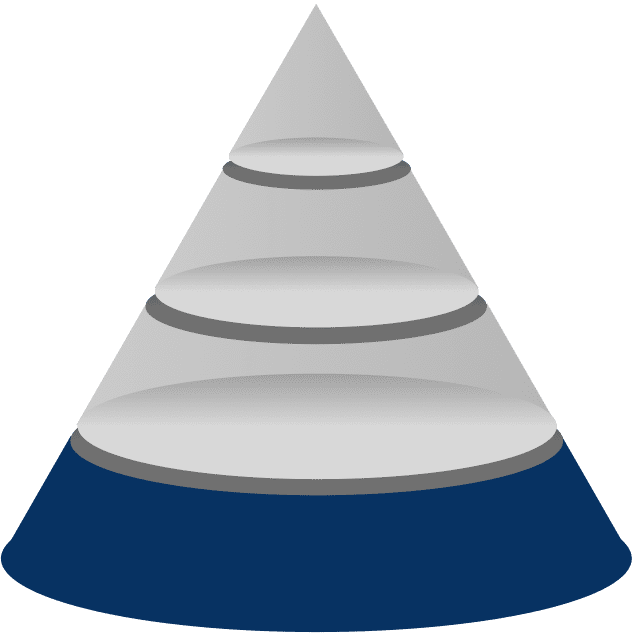It’s an era of differentiated customer service experience. Today, one of the biggest challenges that companies face is to deliver a service experience that is consistent with the company’s strategic positioning, streamlined throughout the customer journey and optimally priced.
Despite the potential to create a high-margin revenue stream, most companies struggle with optimizing the performance of their services business. Key issues include:
- A lack of customer-centric focus: Most organizations manage services as a cost center, without regard to how they serve customers
- Inefficiencies: Functional and data silos hamper 360-degree views of customer and operational realities, which results in inefficiencies and higher costs
- Complexity: Unlike product manufacturing, service execution requires monitoring Installations, asset performance and maintenance; managing downtime penalties and services; optimizing tools and spares management; and integrating back-office operations.
As companies focus on improving the customer experience to drive topline growth and profitability, improving the performance of the service business should be one of the top priorities.
There are four key aspects of customer experience across the aftersales service lifecycle.
- Asset performance
- Contact center or back-office engagement for service
- Field service operation
- Customer satisfaction
Often organizations do not invest in services business with a customer-centric focus, but instead, approach one or two of these pillars as cost centers. That’s a mistake. Not focusing on customer experience across all four stages will result in suboptimal customer experience—and, potentially, harm the brand’s reputation.
SEE ALSO: The Difference Between Customer Service and Customer Experience
Asset Performance
 Asset (or product) performance forms the foundation of a positive customer experience. Typically, organizations with capital-intensive products have a clear and defined focus on not only managing operations but also asset maintenance and services. From asset strategy to asset maintenance, performance and reliability, organizations focus to ensure sustained return on invested capital (ROIC) through low unplanned downtime resulting in higher availability and efficiency. However, a singular focus on asset performance neglects other customer touchpoints, especially when an asset is down.
Asset (or product) performance forms the foundation of a positive customer experience. Typically, organizations with capital-intensive products have a clear and defined focus on not only managing operations but also asset maintenance and services. From asset strategy to asset maintenance, performance and reliability, organizations focus to ensure sustained return on invested capital (ROIC) through low unplanned downtime resulting in higher availability and efficiency. However, a singular focus on asset performance neglects other customer touchpoints, especially when an asset is down.
Contact Center / Back Office Engagement
 In the event of downtime or other asset problems, the contact center is the first touchpoint for most service firms and forms the backbone of the services unit. From receiving the service call or complaints, to logging and routing the call to correct department, scheduling and dispatching the correct service engineer and managing SLAs, this team needs to execute flawlessly. Any issues or delays in response and resolution, as well as mismanaging expectations, hurts the customer experience and brand reputation.
In the event of downtime or other asset problems, the contact center is the first touchpoint for most service firms and forms the backbone of the services unit. From receiving the service call or complaints, to logging and routing the call to correct department, scheduling and dispatching the correct service engineer and managing SLAs, this team needs to execute flawlessly. Any issues or delays in response and resolution, as well as mismanaging expectations, hurts the customer experience and brand reputation.
Field Service Operations
 This is the customer-facing service delivery unit, which works in the field to fix problems. Field service operations typically start with monitoring the installed base and providing the right field technician at the right time and place with the right tools, spare parts, and knowledge to repair the problem. Leading organizations are investing in cognitive assistance (such as chatbots), online/offline access to data and insights, and access to real-time, mobile work order and invoicing information. These factors can vastly improve the overall closure time and significantly reduce instances of multiple truck rolls and overall MTTR and FTFR.
This is the customer-facing service delivery unit, which works in the field to fix problems. Field service operations typically start with monitoring the installed base and providing the right field technician at the right time and place with the right tools, spare parts, and knowledge to repair the problem. Leading organizations are investing in cognitive assistance (such as chatbots), online/offline access to data and insights, and access to real-time, mobile work order and invoicing information. These factors can vastly improve the overall closure time and significantly reduce instances of multiple truck rolls and overall MTTR and FTFR.
Customer Satisfaction
 Few organizations take an end-customer–centric view to provide a differentiated service experience, with a goal of achieving superior customer satisfaction. However, a one-dimensional approach to achieve customer satisfaction costs a lot more to the services organizations since a lot of energy goes into day-to-day firefights, especially with premium customers. Today’s customer not only looks for timely service but also at the lowest cost and quickest turnaround, with complete transparency from ticket open to closure. Client education and demos are forming part of the service, and these form additional cost to the service!
Few organizations take an end-customer–centric view to provide a differentiated service experience, with a goal of achieving superior customer satisfaction. However, a one-dimensional approach to achieve customer satisfaction costs a lot more to the services organizations since a lot of energy goes into day-to-day firefights, especially with premium customers. Today’s customer not only looks for timely service but also at the lowest cost and quickest turnaround, with complete transparency from ticket open to closure. Client education and demos are forming part of the service, and these form additional cost to the service!
The Goal: Delighting Customers
 To gain a competitive advantage with differentiated customer experience and move into the less crowded zone of customer delight, organizations need to embrace and excel across all four pillars of services, while keeping costs down. This is can be achieved by digitally enabled service strategy, execution, and delivery. This not only improves the organization’s net promoter score (NPS) but also creates a more cost-effective customer service environment. Today’s integrated and interconnected digital technology takes advantage of cheaper communication and scalable cloud technology.
To gain a competitive advantage with differentiated customer experience and move into the less crowded zone of customer delight, organizations need to embrace and excel across all four pillars of services, while keeping costs down. This is can be achieved by digitally enabled service strategy, execution, and delivery. This not only improves the organization’s net promoter score (NPS) but also creates a more cost-effective customer service environment. Today’s integrated and interconnected digital technology takes advantage of cheaper communication and scalable cloud technology.
Organizations should connect with individual customers to create customized customer experiences, including:
- End-to-end visibility of operations, delivery, and costs
- Ability to manage assets and resources remotely
- Artificial intelligence (AI), machine learning (ML), and natural language processing (NLP) to predict and optimize the service triggers in real-time.
Ultimately, the goal is for service organizations to change their perspective from costs to investments. Every extra dollar that an organization spends investing in customer service will pay dividends.
A delighted customer is not only loyal but also a promoter and a likely repeat buyer — all of which is good for your service business.


Share this: